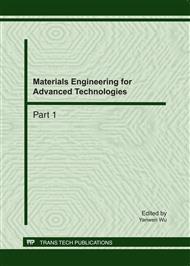p.363
p.369
p.375
p.381
p.387
p.393
p.397
p.402
p.406
Random Fatigue Crack Growth Rates of China Railway Grade B Cast Steel Wheel
Abstract:
Fracture surface observations and statistical deriving are applied for the present investigation on the random fatigue crack growth rates of China grade B cast steel wheel. Results reveal that: the crack grows with relative regular initial tip companied fabric like stripes along the growth direction but few of fatigue striations, and then, cleavage flowers appearing on the district of transient fracture with few of dimples. It indicates that sharp notched structural crack behaviour acts as a few of plastic dissipation process. Non-linear statistical modeling covering entire three pieces of fatigue crack growth is constructed for describing the random crack growth rates. Scattered randomness of the growth rates has been well characterized.
Info:
Periodical:
Pages:
387-392
Citation:
Online since:
June 2011
Authors:
Keywords:
Price:
Сopyright:
© 2011 Trans Tech Publications Ltd. All Rights Reserved
Share:
Citation:


